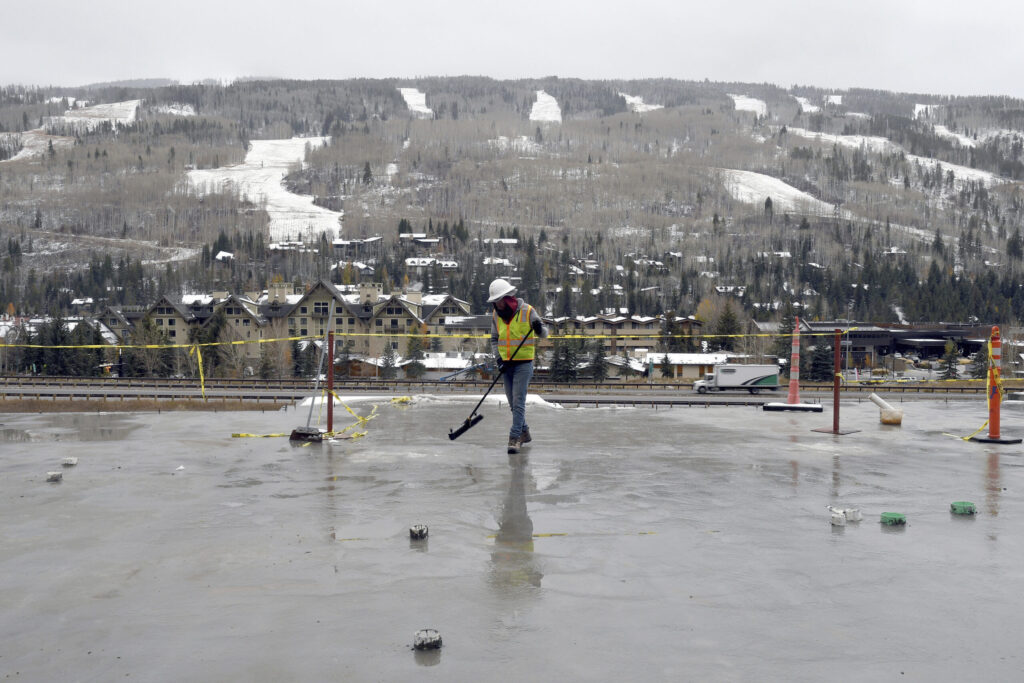Could decomposing corn be global warming strategy?

Scientists who are developing a process for extracting carbon from the air and sequestering it for thousands or possibly tens of thousands of years are competing for the $100 million XPRIZE for “tackling the biggest threat facing humanity – fighting climate change and rebalancing Earth’s carbon cycle.”
The competition is funded by Elon Musk and the Musk Foundation and “is the largest incentive prize in history,” according to a release. The contest opened in April on Earth Day and will run for four years.
David Mitchell, a Laguna Beach, California, entrepreneur and electrical engineer, is spearheading a group of scientists and environmentalists who aim to prove that gigaton-scale carbon sequestration, as required by the XPRIZE rules, is economically feasible, achievable and scalable.
Mitchell and his cohorts are researching how to extract carbon from the environment, and they plan to lock it away deep under the ocean.
Their project would let Mother Nature absorb the emissions into cornstalks. Corn, Mitchell said, extracts a larger proportion of carbon than most crops, making the carbon more susceptible to being locked away.
Mitchell’s project – called Crop Residue Ocean Permanent Residue – proposes to collect about 30% of corn crop waste, comprising stalks, roots and leaves known in the agricultural industry as “stover.” Crews would package the waste into roughly 1,500-pound bales, then transport it to the coast and sink the bales thousands of feet below the ocean’s surface.
In April 2001, scientists Robert A. Metzger of the Georgia Institute of Technology in Atlanta and Gregory Benford of the University of California, Irvine, published a paper proposing “the sequestering of crop residues to capture a significant fraction (12%) of the present U.S. atmospheric carbon emission through disposal in deep oceans.”
“They proved it worked and no one listened,” Mitchell told The Denver Gazette. “So, I said, OK, I’m going to step up to the plate and see what we can do to make this happen. The concept is so simple, yet it sounds almost too good to be true.”
“In the United States, the annual carbon content in residues from corn, soybeans and wheat crops is approximately 250 million tonnes. Globally, an additional 1 billion tonnes of carbon in the form of crop residues may be available,” according to the paper’s abstract.
The plan is predicated on the absence of decomposition at the temperatures and pressures two to three kilometers deep (6,500 to 9,800 feet) in the ocean. At these depths, the temperature of the water averages about 4? (39?) and the pressure is more than 250 atmospheres.
That means that there is almost no free oxygen in the water, a necessary component for decomposition.
Planting trees is a popular way to suck carbon out of the atmosphere, but Mitchell said it’s by no means long-term sequestration.
“Trees are wonderful, but to try to get more than a hundred years of sequestration out of a tree is very risky. It may be subject to fire. It may not be maintained,” Mitchell said.
Mitchell said his plan “puts it in essentially almost a perfect stasis of low temperature, high pressure and low oxygen. So, it’s the right combination of where you really want to put something down to last 1,000 years or more.”
And Mitchell thinks, at this stage of development, that the cost of bailing the stover, shipping it to a port, taking it to sea and anchoring it to the bottom could be done for perhaps $100 per ton of carbon dioxide, “without having to build these carbon capture plants, which cost millions and billions of dollars, and which often run at $815 a ton to capture carbon.”
Mitchell said the process is at least 90% efficient and is completely scalable. As crop production increases, so does the amount of crop residue available for sequestration.
Mitchell and his team have been studying a corn bale “deposited 2.2 kilometers below the Pacific surface, over 100 km offshore of Monterey Bay. This has been in an ongoing research experiment for a decade, performed by the Monterey Bay Aquarium Research Institute.”
Core samples show no decomposition or degradation of the bale, Mitchell said.
There is practically no limit, he said, on how many bales can be sunk to the ocean floor.
“If this is adopted globally, we’re talking in excess of a billion tons (of carbon dioxide) a year,” Mitchell said. “And the impact on the ocean is almost zero because the ocean is so large. Even if this were done at a billion tons a year for a hundred years, we should be talking less than 0.01% of the total ocean.”
Find more information on the CROPS project at crops-xprize.com.














